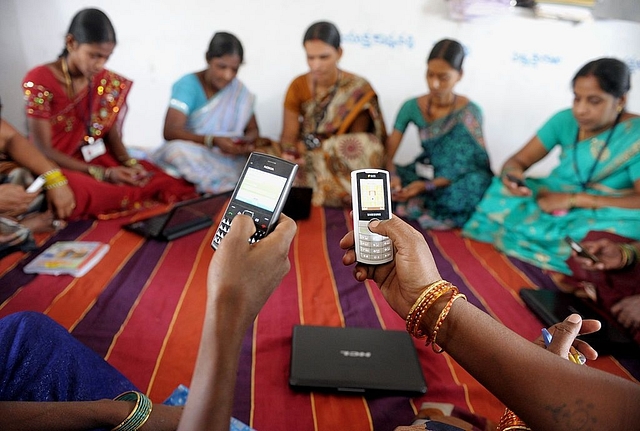
Telcos Have To Cough Up Rs 92,000 Crore After A Recent SC Verdict, But Government Should Really Waive It Off
The telecom sector is critically important for reducing digital inequality which is likely to be a major concern for coming decades.
So far, India has performed much better than other nations when it comes to digital inequality measures.
However, to maintain this lead, it is important to consistently enable growth for the industry.
The recent decision by the Supreme Court of India with respect to the dispute between the Department of Telecom (DoT) and telecom companies is a reminder of a similar judgement a few years ago in an unrelated matter.
The other case was the 2G spectrum case and the judgement in that case continues to be academically evaluated in several Indian and international journals.
Post the judgement, telecom companies owe the DoT Rs 92,000 crore including penalties and interest. The judgement couldn’t have come at a worse time as the sector witnessed two successive exogenous shocks.
The first came with the 2G judgement, while the second came due to the current tariff war between Indian telecom companies. Consumers may have benefited due to the second exogenous shock; however, it is important to look at the financial health of our telecom companies.
More so at a point when the sector’s growth over the last couple of years has come primarily from a substantial increase in outstanding debt.
A key test in such instances is as follows: what will happen if the government were to recover this Rs. 92,000 crore and how will it be different from the government waiving the amount?
If the government were to insist on recovering the dues, we will see a more leveraged telecom sector which will affect its ability to invest for future growth, and it will limit capacity to bid for fresh spectrum allocations.
The fact that there are numerous requests to lower the base price for 5G spectrum is an indication of the mismatch between actual profits of the sector and the government’s revenue realisation expectations from the sale of spectrum.
This further brings us at a point where we must re-examine where rents (profits) should be held from allocation of national resources; should they be entirely with the government or should a fair amount of them be left with the private sector?
The latter is always preferable as this enables further growth of the sector, which adds far more value to the economy.
Therefore, the base pricing and auction design must be guided by a comprehensive vision for the telecom sector, keeping in mind its importance in the overall economic vision of building a $5 trillion economy.
Doing so is not half as complicated as it sounds and would require only a handful of experts in the field of mechanism design, which can help with achieving the best auction design for spectrum allocations.
Fact is, that the sector is struggling now and this additional burden of Rs 92,000 crore is only going to further afflict its growth over the short-to-medium term.
Further, an overleveraged sector should be a cause of worry as it destabilises the entire macroeconomy in the event of a slowdown.
The last thing we want is for telecom companies to become Non Performing Assets (NPAs) over the next couple of years. All of this put together explicitly illustrates a simple point — that is the cost of recovering Rs 92,000 crore is far greater and more severe than waiving this amount.
The judgement does end the ambiguity on what constitutes ‘revenue’ and, therefore, the government will benefit from the same in future. Therefore, foregoing this windfall is, perhaps, a much-needed decision for the telecom industry.
At the same time, one must also look at another multi-thousand-crore package for Bharat Sanchar Nigam Limited (BSNL) and Mahanagar Telecom Nigam Limited (MTNL) that will revive the fortunes of these public sector undertakings.
The silver lining in the package is the Voluntary Retirement Scheme which suggests a downsizing of these companies, which will eventually be merged.
Downsizing of the company is important in order to retain only a small part of the company which is of strategic interest to the government, while the rest of it can be privatised.
However, we’re yet to see an indication of a likely privatisation at the end of the road. At the same time, there are plans to allocate to them 4G spectrum to help in their revival.
While there has been an attempt to gain some of its lost market-share since the announcement of the package, it is important to be aware of the limitations of the public sector.
Therefore, even someone as optimistic as me is unable to imagine a turnaround of these two PSUs. If indeed, there is a turnaround, then it will, perhaps, be an interesting story and one worth telling at leading B-schools across the world.
However, it may very likely be yet another story of good money chasing bad in the hope of a jackpot. Miracles do happen, but it’s only natural to ask if it is possible.
The telecom sector is critically important for reducing digital inequality, which is likely to be a major concern for coming decades.
So far, India has performed much better than other nations when it comes to digital inequality measures. However, to maintain this lead, it is important to consistently enable growth for the industry.
Doing so would require us to revisit our auction design, forego the current demands on account of penalties and interests, while ensuring a predictable policy regime for the next decade.